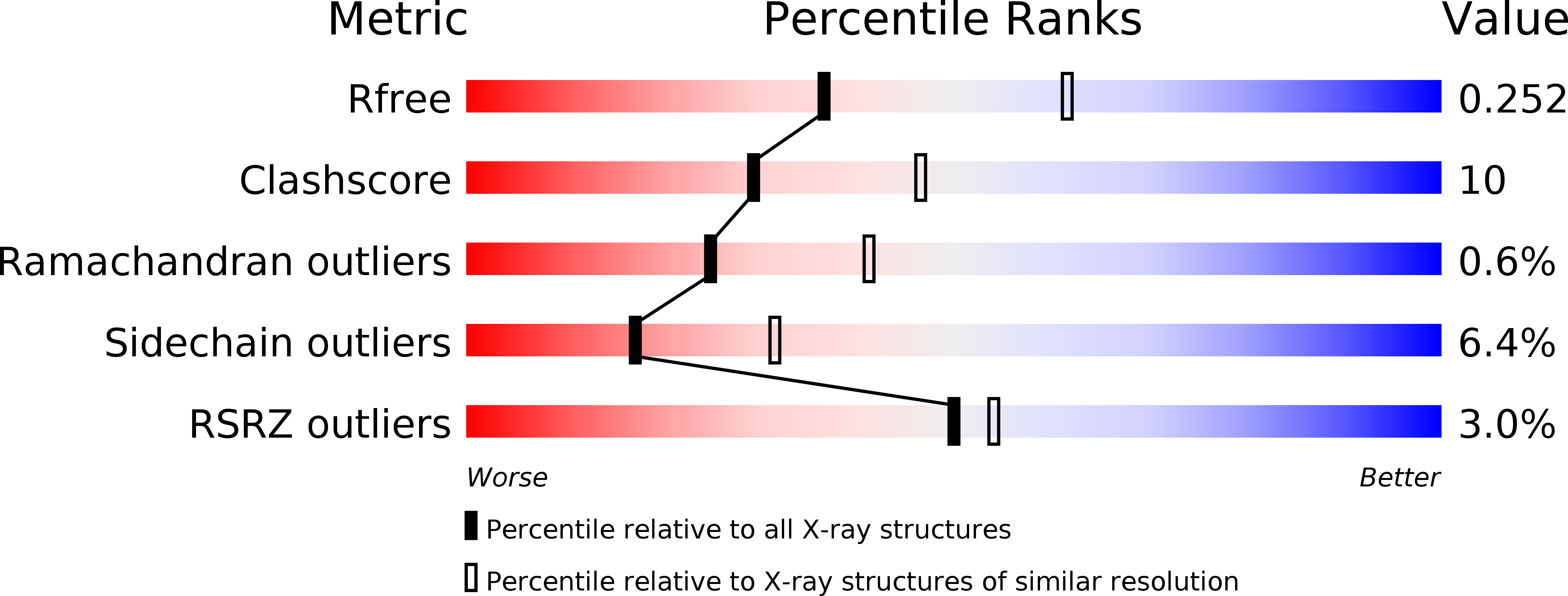Crystal structure of FabG4 from Mycobacterium tuberculosis reveals the importance of C-terminal residues in ketoreductase activity
Dutta, D., Bhattacharyya, S., Mukherjee, S., Saha, B., Das, A.K.(2011) J Struct Biol 174: 147-155
- PubMed: 21081168
- DOI: https://doi.org/10.1016/j.jsb.2010.11.012
- Primary Citation of Related Structures:
3M1L - PubMed Abstract:
Rv0242c, also known as FabG4, is a beta-ketoacyl CoA reductase in Mycobacterium tuberculosis. The crystal structure of C-terminal truncated FabG4 is solved at 2.5Å resolution which shows the presence of two distinct domains, domain I and II. Domain I partially resembles "flavodoxin type domain" and the domain II is a typical "ketoacyl CoA reductase (KAR) domain". The enzyme exhibits ketoacyl CoA reductase activity by reducing acetoacyl CoA to 3-hydroxyacyl CoA in presence of NADH. Conserved catalytic triad Ser347, Tyr360, and Lys364 constitute the active site residues of the KAR domain. Presence of the Tyr and the Lys residues in the triad in a particular orientation is imperative for effective catalytic mechanism. The importance of loop I and II and the role of the C-terminal residues of KAR domain are highlighted. Comparative structural analyses clearly demonstrate that loop II is stabilized by hydrophobic interaction with C-terminal residues to sustain the orientation of Tyr360. Loop I interacts with loop II via H-bonding network to restrict the active site residue Lys364 in a catalytically favorable orientation.
Organizational Affiliation:
Department of Biotechnology, Indian Institute of Technology Kharagpur, Kharagpur 721032, West Bengal, India.

















